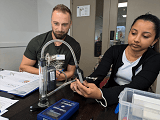- Air Sampling Pumps
- Calibration Equipment
- Servicing and Calibration
- Sampling Heads
- Sorbent Tubes
- Passive Samplers
- Particulate Monitors
- Filters and Cassettes
- Gas Sample Bags
- Air Sampling Kits
- Gastec Detection Tubes
- Face Level Sampling
- Surface & Skin Sampling
- Asbestos Sampling
- Bioaerosol Sampling
- Environmental Sampling
- Heat Stress Monitor
- Noise Monitoring
- Vibration Monitoring
Discontinued Product
We are sorry but that product/product range is no longer available from SKC Ltd.

